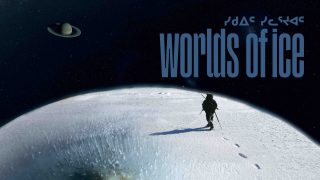Planetarium Programs
-
3-2-1 Liftoff!
Elon the hamster loves science and doing experiments! One day Elon hears a crash. In his garden, he finds a crater with a damaged robot named 8 of 12 inside. How did it get here? Elon fixes the robot and finds out that it fell from a spaceship. Does Elon have the courage and wits you needed to go into space and back? Find out in 3-2-1 Liftoff!
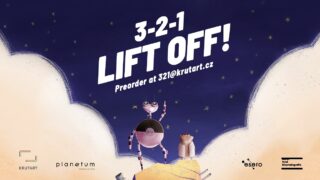
-
5000 Eyes: Mapping the Universe with DESI
The Dark Energy Spectroscopic Instrument (DESI) is creating the most detailed map of our nearby universe. Installed at Kitt Peak in Arizona, DESI’s 5000 independently operated robots can measure the light from thousands of galaxies at once. Dive into modern cosmology, and the scientific motivation for building a large map of galaxies. Join us as we explore the science, instrumentation, and people behind this global endeavor to map the universe. For ages 11 and up.
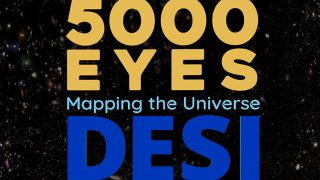
-
Áróra: Tales of the Northern Lights
An immersive fulldome experience about the exquisite beauty of Auroras. Take a journey across time and space to understand the science behind the phenomena and to experience the stories of our ancestors. Guided by the lullaby of the Dawn Goddess, this cinematic adventure invites the audience to join the dance of these eerie lights over remote Icelandic landscapes, learn why they appear, and explore numerous legends of these incredible phenomena.
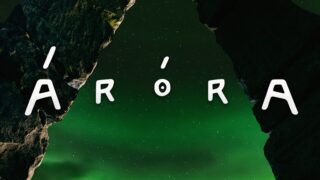
-
Asteroid: Mission Extreme
Asteroid: Mission Extreme takes audiences on an epic journey to discover how asteroids are both a danger and an opportunity. The danger lies in the possibility of a cataclysmic collision with Earth; the opportunity is the fascinating idea that asteroids could be stepping stones to other worlds – veritable way stations in space – enabling us to cross the Solar System.
The challenges are enormous, but a mission so extreme could ultimately lead us to protect our planet and inhabit others.
Explore what it would take for astronauts to reach an asteroid and how such an adventure could benefit humankind.
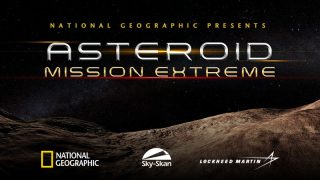
-
Astronaut
The exploration of space is the greatest endeavor that humankind has ever undertaken. What does it take to be part of this incredible journey? What does it take to become an astronaut?
Experience a rocket launch from inside the body of an astronaut. Explore the amazing worlds of inner and outer space, from floating around the International Space Station to maneuvering through microscopic regions of the human body. Discover the perils that lurk in space as we subject ‘Chad’, our test astronaut, to everything that space has to throw at him.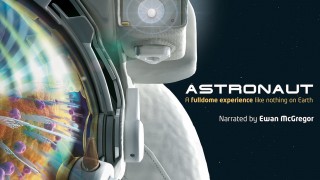
-
Bébé Symphonique
Bébé Symphonique is an experience that draws on the richness and power of orchestral music to create special moments of connection between babies and their parents, while promoting infant neurological development. Consisting of seven instrumental pieces to soothe and stimulate young children, Bébé Symphonique is a wonderful way for parents to connect with their children and relaxing classical music.

-
Big Astronomy – People, Places, and Discoveries!
Big Astronomy – People, Places, and Discoveries! will take audiences to cutting-edge telescopes in the remote mountains of Chile and introduce the people who make sure these instruments operate day and night, unlocking the secrets of the universe. Explore ALMA, VLT, and the new Vera Rubin Observatory (formerly LSST) and how these incredible facilities are changing our view of the cosmos.
Watch the trailer here!
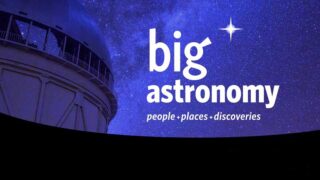
-
Black Hole – First Picture
Black Hole First Picture features the human attempt to create the very first picture of a black hole with the Event Horizon Telescope – a network of 8 Radio telescopes at remote locations in the world ranging from Europe, North and South America, Hawaii to Antarctica. For years, the Event Horizon Telescope has been staring into the hearts of the Milky Way and the galaxy Messier 87, trying to obtain a picture of the shadow of Sagittarius A*, our galaxy’s central supermassive black hole, and the black hole M87*. Discover the story and science behind the first images of black holes!
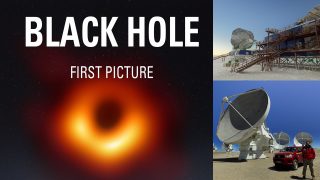
-
Black Holes
The attraction of Black Holes is more than just gravitational. These mysterious graveyards of dead stars have fascinated generations. “Black Holes” explores the history, physics, and mystery of these reality-bending phenomena. Experience the bending of light, the skewing of perception, and the dizzying descent into a black hole.
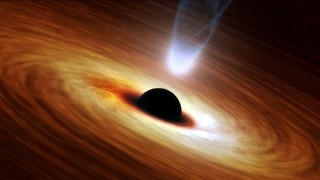
-
Cell! Cell! Cell!
You are made of 70 trillion living cells. They work. They talk. They think. They are what make you alive. This is the story of the trillions of cells that form our bodies, from our beginnings as a single cell to the complexity of a whole body: it’s the story of who we are. Join Raj and Sooki on a totally ex-CELL-ent immersive journey. Get shrunk down by the Shrink-a-tron, go back in time with the Retroscope and see an exploded view of all the body systems courtesy of the Cell-o-tron. Find out how cool cells really are!

-
Chemistry of Life: The Invisible Inside
Sometimes it’s the smallest things that matter the most. Join us on a journey into a seemingly invisible world – the world of molecules and nanoparticles. What does the cell structure of a leaf look like? What might the neural network in our brain be like and how do cells communicate with each other?
Modern scientific visualizations provide an insight into how biochemical processes take place in our bodies, how they connect us with all other living things on Earth, and what their cosmic origin is. Embark on an extraordinary journey into our “inner universe”.
For ages 13 and up!
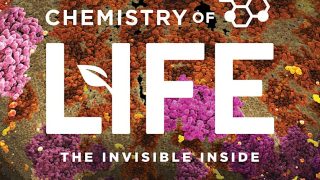
-
Climate Change in Our Backyard
As humans develop a much larger picture about our Earth as a whole, we are beginning to see it as a complex, interconnected, remarkable world, and one that people have impacted directly. Explore the role of carbon dioxide in our atmosphere, the natural temperature variations that the Earth has experienced over millions of years, and how humans are affecting our planet today.

-
Cosmic Colors
From northern lights to garden flowers, color fills our lives and “Cosmic Colors” explains how we use the rainbow to see, understand and explore our universe. Visitors learn more about the electromagnetic spectrum, the Northern Lights and get a tour of the night sky!
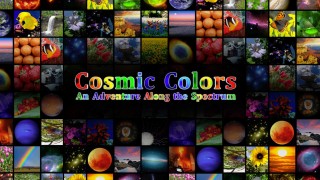
-
Cosmic Mashups
What do you see when you look up into the night sky? Stars. Planets. The Milky Way galaxy. They’re all up there and have been enthralling humankind for our entire existence. But there is more to the night sky that we can’t see. Uncover the awe of imploding stars, galactic collisions and the monstrous blackholes found at the heart of galaxies.

-
Cosmic Recipe
The famous astronomer Carl Sagan once said: “If you wish to make an apple pie from scratch, you must first invent the universe.” Though that may sound crazy, Sagan was onto something BIG! Want to know what? Pull up a chair at our Planetarium’s Periodic Table and learn the cosmic recipes that created everything in our world – even us! Discover how the Big Bang cooked up everyday elements such as the calcium in our teeth, the silicon in our smart phones, and even the carbon in our apple pies in The Cosmic Recipe.

-
Dawn of the Space Age
Experience the exciting beginnings of space travel, from the launch of Sputnik 1 to the Apollo landings on the Moon, and from the assembly of the International Space Station to the first private space flights. Trace the initial competition of political systems for supremacy in space, and the peaceful collaboration between nations today. Join in the vivid, historically accurate reconstruction of humans first steps into the cosmos. Learn about the men and women who braved the risks of space travel. Witness their courage, their passion and their perseverance in “Dawn of the Space Age”.
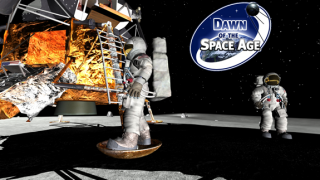
-
Dream to Fly
Have you ever dreamt you were flying? Have you ever thought how wonderful would it be to fly free as a bird? Discover the mystery of flight with Leonardo da Vinci, Montgolfier brothers, Wright brothers and other inventors. Experience the adventure with powerful images and music, an immense and challenging dream, for which mankind has strived since the beginning of history. Dream to Fly explores the history of flight and its most important milestones on our route to conquering the skies—both in terms of technological breakthroughs, as well as our perceptions on flying itself. The dream to fly has raised the man even further – into the outer space.
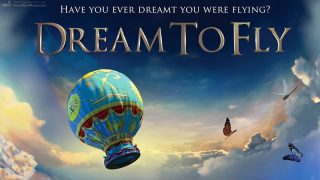
-
Dynamic Earth
Explore the inner workings of Earth’s climate system with visualizations based on satellite monitoring data and advanced supercomputer simulations. This exciting program follows a trail of energy that flows from the Sun into the interlocking systems that shape our climate: the atmosphere, oceans, and the biosphere. Audiences will ride along on swirling ocean and wind currents, dive into the heart of a monster hurricane, come face-to-face with sharks and gigantic whales, and fly into roiling volcanoes. We explore the relationship between Earth and the Sun, life and the carbon cycle, Earth’s climate control system, and how human activities are changing our planet. Come learn how dynamic planet Earth really is!
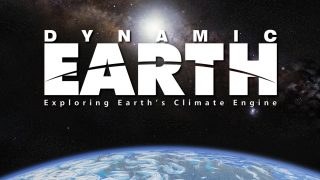
-
Earth Moon, and Sun
Earth, Moon, & Sun is a fast-paced full dome demonstration of lunar phases, eclipses, day and night, the sun and other puzzling events with the help of a confused coyote. This program beautifully illustrates basic concepts like moon phases and seasons. Based on the trickster of Native American lore, Coyote is constantly corrected in his misunderstandings of how things work. A live tour of the Maine sky and its beautiful constellations completes this micro-unit of astronomy.
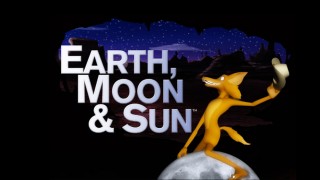
-
ECLIPSE: The Moments of Wonder
Join us for an immersive view of eclipses, the most spectacular sights in the sky! Explore the nature of these special celestial alignments and get prepared to safely observe them. Experience the awe and wonder with stunning images of both solar and lunar eclipses captured by a world-renowned astro-photographer from locations around the globe. The program includes information on how to observe the April 2024 solar eclipse visible in Maine.
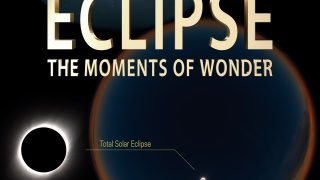
-
Einstein’s Gravity Playlist
What are gravitational waves? How are these ripples in space-time created? Albert Einstein predicted there existence in 1916, and a century later, scientists detected these waves using incredibly precise laser technology here on Earth. See the Laser Interferometer Gravitational-Wave Observatory (LIGO) and Lucia, a PhD student in physics, on an exploration of gravitational waves and their importance in helping understand the universe.
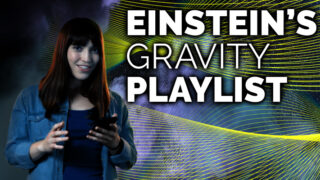
-
EXO: Are We Alone?
Humankind has always sought to understand the mysteries of the Universe and speculated about the possibility of extraterrestrial life. Today we know of thousands of exoplanets — planets located outside our Solar System — that offer valuable information about our own planet, its origins and life on Earth. We’re on the cusp of making some fascinating discoveries. But how will they change our lives?
Watch the trailer here!

-
Expedition Reef
Explore the secrets of the “rainforests of the sea” and embark on an oceanic safari to the world’s most vibrant and endangered marine ecosystems – coral reefs. Discover how corals grow, feed, reproduce, and support over 25% of all marine life on Earth — while facing unprecedented threats from climate change, habitat destruction, and overfishing. Although they line about a third of tropical coastlines, reefs comprise less than one percent of the world’s ocean environments, showing how precious and fragile these systems are. Thousands of tropical fish and colorful corals thrive in one of the largest and deepest indoor displays of living corals. Narrated by Tony Award® winner Lea Salonga, Expedition Reef will immerse audiences in an undersea adventure. This fulldome planetarium show provides an up-close look at a part of our planet many people have never experienced.
Watch the trailer here!
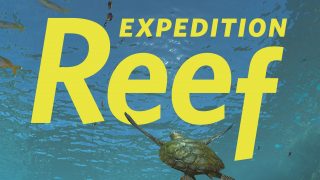
-
Explore!
Mars… For centuries it’s been an object of human fascination. Once mysterious, soon this red world may become our new home. This became possible due to daring individuals like Johannes Kepler: fascinated with the world, striving toward discovery and embracing challenges it may bring. It is our duty to continue their work… Explore, Dream Discover. Take an adventurous journey with humankind: from ancient Mesopotamia to modern space exploration! Experience the fascinating history of astronomy, geocentric and heliocentric models, Kepler laws of planetary motion, and discover the principals of orbital maneuvers which enable satellites and space travel.
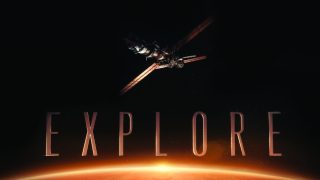
-
Faster Than Light
The impulse to strike out into the unknown, to see what’s over the horizon… is as old as humanity. Today, a whole new horizon beckons. Astronomers are racing to find habitable worlds, including any that might exist in the neighborhood of our Sun. But if we find one, how will we ever get there? How long will it take? What rocket designs might one day conquer the voids of space? Take a virtual ride aboard spacecraft of the future based on whole new technologies designed to achieve ultra‐high speeds, which might provide ways to travel to new worlds.
Watch the trailer here!
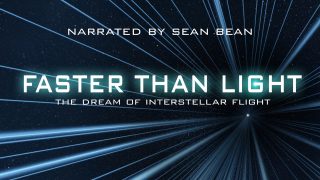
-
First Stargazers
Journey back in time to explore how the first stargazers experienced the sky above. Your guide is Nashira, a friendly time traveler who has visited Earth many times before. Witness the very first stargazer making a Moon calendar out of animal bone 30,000 years ago. Discover the ancient pyramids of Giza and their alignment to the skies. See stunning digital re-creations of the Parthenon, Alexandria Library, Stonehenge and Abu Simbel Temple and be inspired by the first stargazers who laid down the foundations of modern-day astronomy.
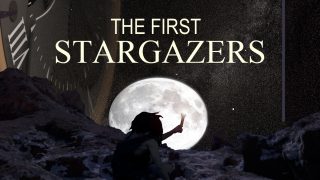
-
Forward to the Moon
Forward to the Moon engages audiences in NASA efforts to send both humans and robots to the Moon and Mars. NASA’s 21st century Artemis program, named after the Greek moon Goddess and twin of Apollo, is the next step in our mission to explore the universe and land the first woman on the surface of the Moon. Jessica Meir from Caribou, Maine has been selected as one of the Artemis Mission astronauts and might be the first Mainer on the Moon – learn about it here at the planetarium!
Narrated by Kari Byron from CrashTest World and Mythbusters.
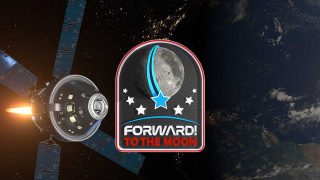
-
From Dream to Discovery
Join NASA’s engineers as they design, test, and launch today’s hottest missions into space. Witness the enormity of the new James Webb Space Telescope, the intensity of Goddard Space Flight Center’s testing facilities, and the excitement of the New Horizons mission to Pluto. From blueprint to blastoff, experience how robotic space flight is pushing the frontiers of human exploration to the very edges of the universe!
Watch the trailer here!
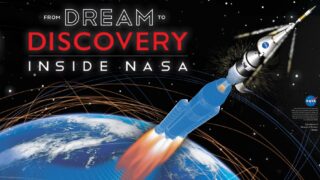
-
From Earth to the Universe
The night sky, both beautiful and mysterious, has been the subject of campfire stories, ancient myths, and awe for as long as there have been people. A desire to comprehend the Universe may well be humanity’s oldest shared intellectual experience. Yet only recently have we truly begun to grasp our place in the vast cosmos. To learn about this journey of celestial discovery, from the theories of the ancient Greek astronomers to today’s grandest telescopes, we invite you to experience From Earth to the Universe.
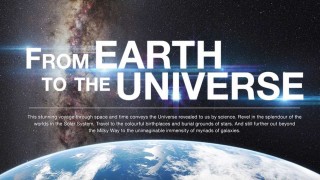
-
Global Soundscapes
Listen…can you hear that? It’s the sound of the Earth! Take a sound safari to explore the health of our planet. Travel the globe to investigate the spectacular soundscapes of Costa Rica’s rainforests, Hawaii’s coral reefs, and Mongolia’s vast grasslands. Learn how animals use sounds to survive and communicate. Experience sound in new ways through interactive activities and incredible slow-motion footage – you’ll hear the Earth in a whole new way!
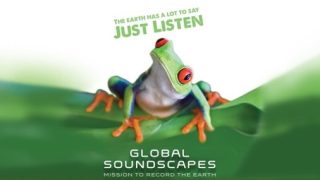
-
God, Science, and Our Search for Meaning
Since the dawn of humanity, we have looked up to the skies in search of meaning. Even today, the mysteries of the cosmos inspire many of our most profound questions: Who are we? Why are we here? How did all of this come to be? God, Science, and Our Search for Meaning explores our oldest questions, offers exciting new possibilities, and unveils the startling interplay between science and religion as they both strive to illuminate our deepest mysteries.
Written and narrated by international bestselling author Dan Brown
Watch the trailer here!
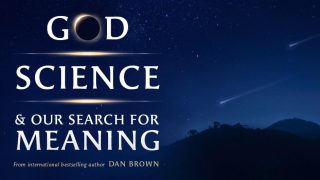
-
Habitat Earth
Living networks connect and support life forms large and small—from colonies of tiny microbes and populations of massive whales to ever-expanding human societies. Discover what it means to live in today’s connected world in Habitat Earth. Through stunning visualizations of the natural world, dive below the ocean’s surface to explore the dynamic relationships found in kelp forest ecosystems, travel beneath the forest floor to see how Earth’s tallest trees rely on tiny fungi to survive, and journey to new heights to witness the intricate intersection between human and ecological networks. See how all species on our planet are interconnected and important to sustaining our living world.
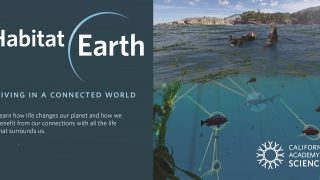
-
Halloween: Celestial Origins
Vampires, Witches, Goblins, and other spooky creatures! What do you associate with Halloween? Trick-or-Treating, costumes, or something more… Be it ghoulish or ghostly, Halloween is an astronomical holiday! Experience the history of Halloween and how it fits into the seasons as a “cross-quarter day.” From Celtic roots around the harvest and bonfires to modern celebrations, see why the night is celebrated as one of spirits from beyond and sweet treats! See how Samhain, and All Saints Day would eventually transform into Halloween. Traverse the night sky and learn what planets, constellations, and stars will be out on your Halloween evening. A fun filled program for the whole family!
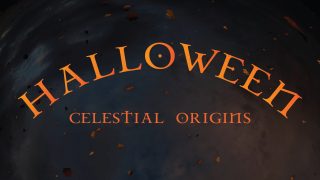
-
Incoming!
Asteroids and comets have collided with our planet throughout its history, changing the course of life on Earth and shaping the world we know today. Real-time data from current NASA missions help audiences explore the past, present, and future of our Solar System. Take a journey through the dynamic story of our cosmic origins. Discover what these impacts from above can teach us—and how scientific advances may allow us to find and track cosmic threats before they reach planet Earth. Narrated by George Takei.
Watch the trailer here!
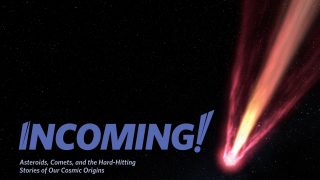
-
Into the Polar Night
Take an epic expedition to the Artic Ocean to discover the importance ice for planet Earth! The Arctic sea ice groans and creaks as a massive icebreaker slowly churns through. Scientists on an ice flow call out to each other in the dark as a chainsaw cuts through the ice, exposing open ocean below. Journey with scientists on one of the most ambitious international climate collaborations ever, MOSAiC.
The Multidisciplinary Drifting Observatory for the Study of Arctic Climate seeks to gain a better understand of the Artic region and the role it plays in global climate and weather patterns.
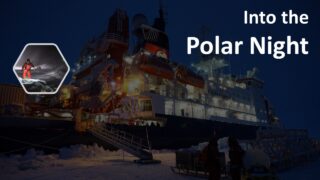
-
Legends of the Night Sky: Orion
Take a fun and lighthearted look at the myths and stories associated with the constellation Orion, the great hunter of the winter sky. Orion comes to life in a fun-filled, animated accompanied by narrators Aesop the owl and Socrates the mouse as we follow Orion’s adventures as he grows to manhood, battles mythical beasts, foils the plot of an evil king and wins the heart of Artemis, the beautiful moon goddess. We learn how the constellation Orion was placed in the sky, forever turning overhead throughout the seasons. The program includes a live sky lecture showing where Orion and his companions are located in the Winter Skies.
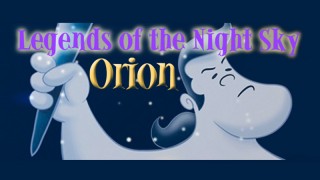
-
Legends of the Night Sky: Perseus and Andromeda
Perseus and Andromeda is a fun-filled story of the beautiful but unfortunate princess Andromeda, who in divine punishment for her mother’s bragging, is sacrificed to a sea monster—and rescued by the Greek hero Perseus. Brought to life by animated narrators Aesop the owl and Socrates the mouse as we follow Perseus on his quest to become a hero and slay Medusa. We learn how the constellations of the fall season were placed in the sky, forever turning overhead throughout the seasons. The program includes a live sky lecture showing where Perseus and Andromeda are located in the Autumn Skies.
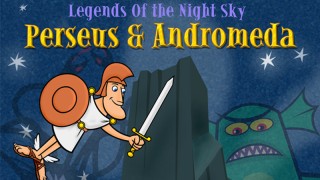
-
Legends of the Northern Sky
For thousands of years, humanity has gazed up at the stars in wonder, searching for truth, understanding, and insight. Embark on a journey with the Indigenous peoples of the western plains of Canada and share in their wisdom conveyed by the stars. Alongside Ocek, the fisher, and his band of animal friends, audiences take an expedition south to retrieve summer and return it to the frozen north. Learn how the giant bear Mista Maskwa, was finally tamed by a brave band of birds which chase Mista Maskwa every night, keeping us safe from his foul temperament.
The Indigenous people of North America connected with the night sky in fundamental ways that resonated with their world. Discover their stories in the stars and in turn, learn a little bit more about the spirit that connects us all.
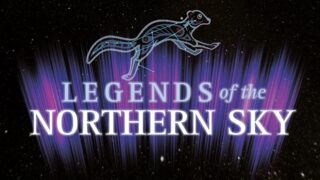
-
Life of Trees
In The Life of Trees, a cheeky ladybug called Dolores and a quirky firefly called Mike take the audience on an adventurous journey of exploration into the wondrous world of trees. Attend the Creepy Crawlies Educational Institution to find out how trees live and their importance to the wider environment.
On the excursion, Delores and Mike zip around a tree, and in doing so, playfully learn its secrets: How do plants get their food from the Sun? How do they grow? How does water get from the roots to the top of the crown? And how does all this make life on our earth possible?
The Life of Trees is a perfect planetarium show for the whole family that raises the awareness of protecting the natural environment in which we live.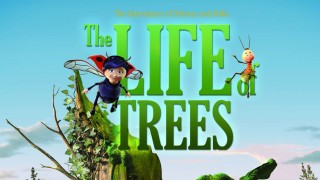
-
Little Star that Could
It’s hard to be a little star in a big universe! Join a medium sized, yellow star as he makes his way through space. In his travels, he meets many different types of stars and learns about some of the other things that make our universe so interesting. After meeting stars, nebulas, and galaxies, the little star takes a good look at himself and finds that he, too, is special. He has nine planets that depend on him for warmth and light. Along with the little star, audiences learn the ways each planet is special.
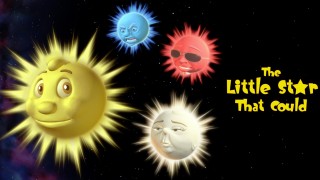
-
Living Worlds
Earth is a planet shaped by life. From the forests that help stabilize our climate, to the winds carrying life-sustaining water and oxygen to far-flung parts of the globe, the fingerprints of life are visible even from many light years away. Journey through space and time to examine life as an essential quality of our home planet Earth. Explore of the co-evolution of life and the ways it has transformed Earth’s surface and atmosphere over billions of years. See how light and color can help us spot a living world, even from great distances. Living Worlds encourages us to consider how a deeper understanding of our own planet can aid in the search for life across the cosmos, and to reflect on ways we can partner with our living world to ensure our continued survival. Narrated by Daveed Diggs.
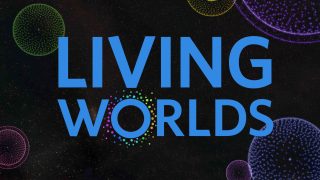
-
Lucia: The Secret of Shooting Stars
Vladimir, a polar bear and James, a penguin, travel into space aboard the Polaris to study polar auroras. Hit by a meteorite, they crash at the foot of a pre-Columbian pyramid and meet Lucia, a hummingbird who is passionate about rocks. She tells them about a legend evoking “stones of light”. Meteorites, shooting stars, these “stones of light” intrigue them all. Searching for answers, they board for the Moon, then the asteroid belt, and finally land on a comet nucleus. Observations and analyses will allow them to find answers to their questions about these objects and learn about the origin of the solar system.
Watch the trailer here!
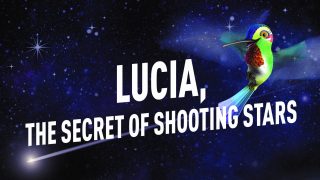
-
Magic Globe: A Story of the Seasons
On vacation at her grandpa’s, a little girl Mia accidentally discovers a mysterious piece of astronomical machinery. Edek, Mia’s eccentric uncle, tricks the girl into using the tool’s secret powers to change the world’s seasons. She quickly realizes the consequences of what they are going to do, but Edek doesn’t want to let the plan go.
Magic Globe is an engaging story designed to interest and challenge children from 5 to 12 years old. It has a clear educational structure with all science-related topics broken down into manageable chunks and naturally woven into the storyline. It allows children to recap knowledge they already have as well as learn multiple new concepts while following the story, which makes it perfect for mixed-ability audiences.
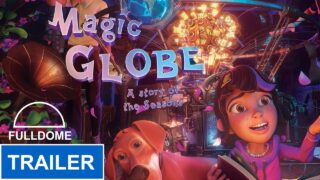
-
Magic Treehouse: Space Mission
Travel with the brother-sister duo, Jack and Annie, in their Magic Treehouse, as they discover a note that asks them to answer a series of six questions about space. With the help of an astronomer, the Internet, an astronaut, books and the writer of the mysterious note, Jack and Annie are taken on a wondrous journey of adventure and learning.
This exciting voyage will carry visitors to the planets and far out into the Universe where Jack and Annie nearly get… Well, we don’t want to give it away. The adventure is just beginning!
Based on the popular book series by Mary Pope Osborne.
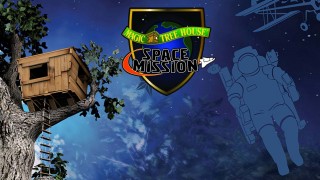
-
Mars 1001
An international crew is about to embark on the first interplanetary journey in history, the first manned mission to the surface of Mars! Science reporter Miles O’Brien is reporting while events unfold for the crew on their daring 1001 day long mission. Witness firsthand their brave attempts to put human footprints on Mars and return safely to Earth. This journey will be extending our knowledge of Mars and will be determining whether or not mankind has a future among the stars. Experience the thrill of the grandest mission of exploration ever undertaken – humans going to Mars!
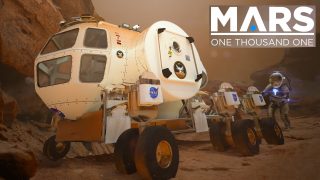
-
Mars: The Ultimate Voyage
Ever wondered what it will take for astronauts to travel to the Moon, Mars and beyond? On this long journey, what challenges will astronauts face? How will they stay motivated and healthy on their spacecraft so far away from Earth? Discover how NASA research and training initiatives are preparing the next generation of astronauts who will head to Mars. Witness what it takes to embark on the first human mission beyond Earth’s orbit.
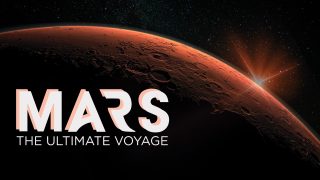
-
Mayan Archaeoastronomy: Observers of the Universe
The night is an eye, both dark and bright! It forces us to look up and ask ourselves questions about our place in the Cosmos, our origins, and what is beyond the horizon. Using spectacular visuals and stunning sound, audiences tour six ancient Mayan temples: San Gervasio, Chichen Itzá, Uxmal, Edzna, Palenque, and Bonampak. Along the way they dive into Mayan knowledge of the sky exploring the movement of the Sun, the Moon and Venus. Find Balam the Jaguar constellation and explore how the Mayan’s created a calendar more accurate than the one we use in modern times. Journey back in time to explore how The Mayan’s used the sky to understand their world and their place in it!
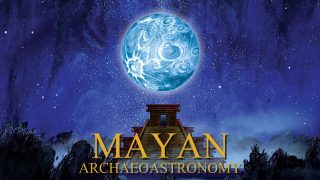
-
Mexica Archaeoastronomy: Between Space and Time
Through impressive immersive scenarios, Mexica Archaeoastronomy: Between Space and Time illustrates the important role played by astronomical observation for the evolution of pre-Hispanic cultures in central Mexico. The Mexicas used the calendrical and astronomical knowledge inherited by their predecessor cultures to found the capital of their empire: Tenochtitlan. Vibrant colors, shapes and sounds transport the viewer to one of the most important cultures that, to this day, still lives in the heart and skin of the Mexican people. The program includes a tour of the night sky and an update on latest astronomy news.
Watch the trailer here!
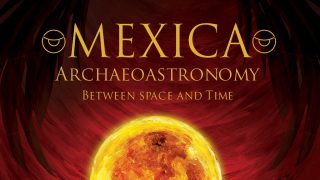
-
Mystery of the Christmas Star
Journey back 2000 years to Bethlehem as we seek to discover a scientific explanation for the Star the wise men followed to find the baby Jesus. Investigate possible dates for the birth of Christ and look at recorded sightings of significant historical and astronomical events during this timeframe. We’ll explore scientific explanations for celestial objects that could have been remarkable enough to cause the wise men to travel across the desert from Babylon to Bethlehem just to see a newborn King. Regardless of what the star was, the message of Peace on Earth and goodwill to all still rings true today!
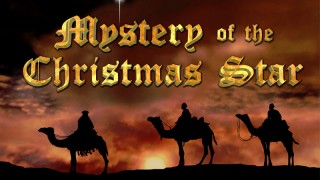
-
Natural Selection
Join the young Charles Darwin on an adventurous voyage of exploration circumnavigating the World with the HMS Beagle. In the 19th century in Victorian times many physical phenomena were already discovered and described by natural laws, but life’s most eloquent mechanism was still unknown: How could new species arise to replace those lost in extinction? Darwin explored the explanation for how life evolved and the factors which have shaped its development here on planet Earth. Come explore how he used evidence and reason to come up with the theory of Natural Selection.

-
One Sky
One Sky is a collection of sky cultures around the world. It recognizes that all people around the globe share strong connections to the stars for navigation, time keeping, agriculture and storytelling. As active exploration of our universe continues today, we honor the cultures who first looked up and dreamed about our place in the cosmos. Everyone sees something a little bit different in the stars, but we all share One Sky.
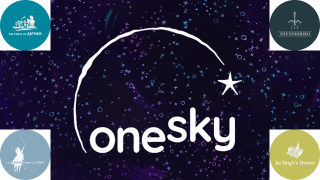
-
One World, One Sky: Big Bird’s Adventure
Explore the night sky with your favorite friends from Sesame Street in One World, One Sky: Big Bird’s Adventure. Follow along with Big Bird, Elmo and their friend from China, Hu Hu Zhu, as they take an imaginary trip from Sesame Street to the moon, where they discover how different it is from Earth. They explore the day and night sky, learn about the Big Dipper, the North Star, the Sun and the Moon. Along the way, they learn how the sky we see is shared by many people around the world. Children attending the show can interact as they watch, drawing constellations and counting the time it takes the sun to set.
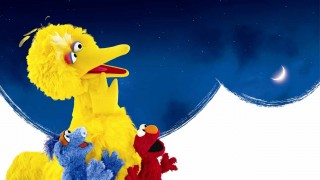
-
Origins of Life
Tour the far reaches of the universe and our Earth as the evolution of life is examined in this fully immersive space experience. From the Big Bang to new life on Earth, from great extinctions to the search for life beyond our planet, Origins of Life is an inspirational journey through time and a celebration of life near and very, very far.
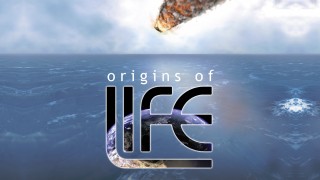
-
Phantom of the Universe
From the journey of protons racing through the world’s largest particle collider to up-close views of the Big Bang and emergent universe, and the nearly mile-deep descent to an underground experiment, Phantom of the Universe immerses audiences in the search for dark matter. Explore this mysterious matter and how we are using discoveries at the Large Hadron Collider to get closer to discovering the true nature of Dark Matter. View the first hints of its existence through the eyes of Fritz Zwicky, the scientist who coined the term “dark matter.” Explore the astral choreography witnessed by Vera Rubin in the Andromeda galaxy, and then plummet deep underground to see the most sensitive dark matter detector on Earth, housed in a former gold mine. Speed alongside particles before they collide in visually stunning explosions of light and sound at Large Hadron Collider at CERN, while learning how scientists around the world are collaborating to track down the constituents of dark matter. Executive Producer Michael Barnett of Lawrence Berkeley National Laboratory served as an advisor to PBS’s NOVA series Elegant Universe and the feature film Angels & Demons. Featuring narration by Academy-Award winning actress Tilda Swinton, Phantom of the Universe showcases imagery from CERN’s Media Lab.
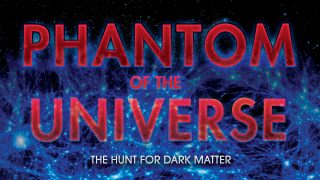
-
Polaris: The Space Submarine and the Mystery of Polar Night
A traveling penguin from the South Pole and a funny polar bear from the North pole meet on arctic sea ice. They become friends observing the night sky together and wondering why night is so long at the poles of the Earth. This mystery leads them on a scientific adventure by building an improvised spaceship to travel around the Earth to learn about seasons, visit Mars and Saturn to learn about ice in the solar system and how planets have similarities and differences which make them unique.
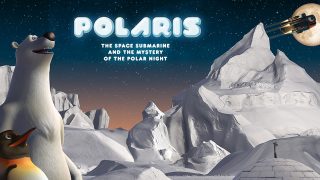
-
Rising Star: A South African Astronomy Journey
Take an astronomical journey from our beginnings through the development of astronomy research in South Africa, and discover what the future of astronomy holds for the country. Dive into multi-wavelength and multi-messenger astronomy with the many remarkable facilities such as Southern African Large Telescope (SALT) and the most powerful radio telescope in the Southern Hemisphere, MeerKAT. See how astronomy can be a powerful force in the life of a nation, and inspire the next generation of explorers.
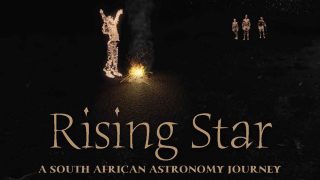
-
Secret of the Cardboard Rocket
Join two children on a magical journey through the Solar System, aided by a talking astronomy book, a cardboard rocket, and a vivid imagination. During this imaginative show, audiences will land on Venus, fly through the rings of Saturn, and discover the secrets of the Solar System.
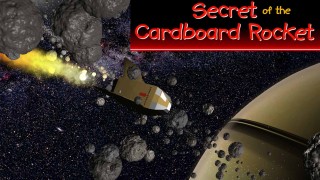
-
Secrets of the Universe
Travel with scientist Manuel Calderon De La Barca Sanchez as he journeys to the largest machine ever built, the greatest scientific instrument ever created, the Large Hadron Collider (LHC).
There, he joins a global team working to uncover another amazing breakthrough in this new world of technology-driven physics. We get an inside look at the machine and come to understand just what it means to do science, teaming up for the flag of humanity to solve the universe’s greatest mysteries.
We don’t stop with the Large Hadron Collider, though. The machines we’ve built are as diverse as the secrets we’re looking for, and the people looking for them. We travel to the Laser Interferometer Gravitational Observatory (LIGO), the amazing project that recently confirmed Einstein’s century old prediction of the existence of gravitational waves.
Humanity is at the edge of unprecedented scientific discovery, and we can all be a part of it!

-
Solar Superstorms
A fury is building on the surface of the Sun – high-velocity jets, a fiery tsunami wave that reaches 100,000 kilometers high, rising loops of electrified gas. What’s driving these strange phenomena? How will they affect planet Earth? Find the answers as we venture into the seething interior of our star. Travel into the tangle of magnetic fields and superhot plasma that vent the Sun’s rage in dramatic flares, violent solar tornadoes, and the largest eruptions in the solar system: Coronal Mass Ejections. Explore how the Sun influences our lives on Earth in numerous ways in the modern age. The program is narrated by Benedict Cumberbatch of Star Trek and Dr. Strange fame.

-
Space Aliens: Looking for Life in the Universe
One of the oldest question’s humans have asked since looking at the sky has been if life exists beyond our planet. Follow cosmic clues from the ocean floor to a journey across the galaxy! What might extremophiles here on Earth tell us about the ability of life to thrive in other locations in our universe? Learn how new discoveries of exoplanets and water in our own solar system plays into this cosmic quest for other life forms beyond Earth. Find out how scientist are using new tools to look for places where life might be possible in our own galaxy.
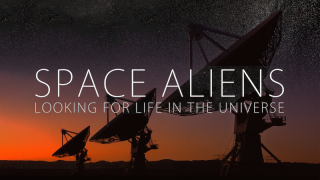
-
SPARK: The Universe in Us
From the oxygen we breathe to the uranium that warms our planet’s core, we owe everything to the stars. SPARK: The Universe in Us is about our deep connection not just to Earth, but to stars millions of light years away—and billions of years in the past. Discover the celestial origins of the elements we all have in common. Along the way, you’ll enter the core of a giant star just before it implodes, experience the quiet demise of a star like the Sun, and see how colliding stars seed the Universe with the building blocks of life. Narrated by Diego Luna.
For ages 12 and up!

-
Spooky Space
Looking for cosmic fun this Halloween season? Would you like to meet the spectacular stars of Halloween? Monsters, zombies, and ghosts — and their far more terrible counterparts in space? Oh yes, space has its monsters: Black holes, zombie stars, and spectacular ghostly nebulae! Explore these “spooky” wonders of the night sky here at the planetarium. Learn about the celestial origins of Halloween and how it is an astronomical holiday.

-
Star Dreaming
Explore the mysteries of the universe with Max and Lucia as they travel deep into the Australian Outback to visit the site of the world’s largest radio telescope and the planet’s oldest living culture. Discover the SKA (Square Kilometer Array) radio telescope and the questions it hopes to answer. Enter the Ancient land of the Yamaji people, Aboriginal Australians who have shared star stories for more than 60,000 years. Discover how much the scientific and ancient world have in common, for we all live under one sky – a shared sky, in Star Dreaming.

-
Stargazers of Africa
From the dawn of time, African people have looked to the skies above for inspiration and guidance. Stargazers of Africa is a journey connecting the stars, Moon and planets to the people across this great continent—from long ago to the stargazers of today. Experience African tales from the Yoruba people and a Nigerian story about the far away stars. Discover the African Stonehenge and Moon calendars made from bones over 40,000 years ago!

-
Stars
Every star has a story. Some are as old as time, faint and almost forgotten. Others burn bright and end their lives in powerful explosions. New stars are created every day, born of vast clouds of gas and dust. Through every phase of their existence, stars release the energy that lights the Universe. Journey to the furthest reaches of our galaxy and experience both the awesome beauty and destructive power of stars.
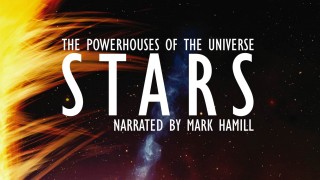
-
Supermassive Black Holes
Explore the amazing environments of the strangest objects in our universe – Supermassive Black Holes! Leading observational and theoretical astronomers share the latest state-of-the-art observations and stunning computer simulations to shed light on the physics of black hole formation in the context of galaxy evolution. Travel inside a black hole, see how they shape galaxies and more!
For ages 9 and up.

-
The Arctic: Our Last Great Wilderness
Vast. Wild. Magical. The Arctic is not just one of the planet’s greatest natural spectacles, it’s a place with global ecological importance that has supported Indigenous communities and diverse ecosystems for generations. Follow the elusive Porcupine caribou herd as it migrates to the Arctic Coastal Plain, one of the longest animal migrations on Earth. Meet the polar bears, musk oxen, wolves, golden eagles, and people who call this area home. Experience the adventure of The Arctic, and learn why this remarkable land deserves our protection. Narrated by Indigenous film producer Princess Daazhraii Johnson (Neet’saii Gwich’in) with National Geographic photographer Florian Schulz.
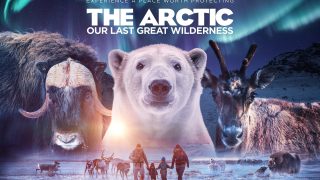
-
The Artistic Universe
Artist have often gained their inspiration from viewing our skies! A starry night, the lovely Moon, and images taken through telescopes have inspired paintings, poetry, music, theatrical plays, science fiction and more. This month we dive into the connection
between art and science in several ways.
Oh, the space places you will go… Dance with the planets, find yourself inside van Gogh’s Starry Night painting and sing a science version of Twinkle, Twinkle Little Star! Fly through incredibly beautiful nebula and more!
Discover the many fascinating connections between art and science. Experience our Artistic Universe!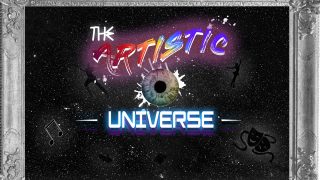
-
The Christmas Star
Over the years numerous people have tried to explain the appearance of the Star of Bethlehem, as described in the Bible and other historical texts of the time. What was the Christmas Star? Could it be explained as an exploding star, a comet or some other natural celestial phenomena? Explore a variety of scientific explanations for the Star of Bethlehem in this family friendly program at the planetarium.

-
The Dark Matter Mystery: Exploring a Cosmic Secret
What keeps Galaxies together? What are the building blocks of the Universe? What makes the Universe look the way it looks today? Researchers all around the world try to answer these questions. We know today that approximately a quarter of the Universe is filled with a mysterious glue: Dark Matter. We know that it is out there. But we have no idea what it is made out of.
This planetarium show takes you on the biggest quest of contemporary astrophysics. You will see why we know that Dark Matter exists, and how this search is one of the most challenging and exciting searches science has to offer. Join the scientists on their hunt for Dark Matter with experiments in space and deep underground. Will they be able to solve the Dark Matter Mystery?

-
The Secrets of Gravity
Luke is interested in the universe and its secrets. He is fascinated by the stars, the universe, and the laws of nature. One night, he sneaks into the Albert Einstein Museum where he meets ALBYX3, a small, clever but rather quirky robot who knows all about Albert Einstein and his theories. ALBY takes Luke on a magical journey through space and time during which they uncover the secrets of gravity and learn about friendship and imagination.
Watch the trailer here!

-
The Stellars: Mission Green
Imani, Aki, and John are three friends from an alien solar system. While on a space exploration mission, something routine for their tribe, they distractedly neglect their onboard “chores,” leading their ship to crash on an unknown planet – Earth. The accident damages the life-support system that sustains the cherished forest they keep onboard, which gives them their vital Yumi-Plumi fruits. However, forests in their society are usually taken care of by robots.
With no knowledge of plant care or any means of contacting their elders, they are fortunate to be able to turn to the planetarium audience for help. All hope now rests on the Earth children, who help the Stellars discover what plants need to survive and to rescue their Yumi Plumi forest. There is a race against time – will the children be able to figure out the successive elements needed to nourish the plants?
Of course, they will, as we’ve prepared subtle clues, ensuring that everyone will be winners. However, to make sure it won’t be too easy, young viewers will have to travel together with our heroes to visit an ancient-growth forest on Earth, to search among the trees there, teeming with life. They will have to help launch the scout ship, navigate through space, locate the right spot on Earth – and then escape from an angry bear!

-
The Sun – Our Living Star
The Sun has shone on our world for four and a half billion years. The light that warms our skin today has been felt by every person who has ever lived. It is our nearest star and our planet’s powerhouse, the source of the energy that drives our winds, our weather and all life.
The passage of the Sun’s fiery disc across the sky — day by day, month by month — was the only way to keep track of time for countless past civilizations. Don’t be fooled by the terminology; although it is a typical dwarf star, the Sun consumes 600 million tons of hydrogen each second and is 500 times as massive as all the planets combined.

-
To Space and Back
Space exploration, our greatest adventure, is having a big impact on our lives. It is helping us to discover a universe of unimaginable scale and beauty, and it is reaching down into our world and influencing the way we live.
To Space & Back takes audiences on an incredible journey from the far reaches of our known universe to our own planet. It is an extraordinary story of human ingenuity and incredible engineering, describing how the technology that transports us through space is paving the way for the devices and apps we use every day. What is happening above is coming back down to Earth!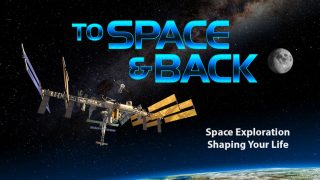
-
Total Eclipse: Chasers of the Lost Sleep
Kentucky, a sleepless hen, and star of social networks, finds out that animals fall asleep during total eclipses. With the help of her robot J.O.S., she travels through space-time in search of the perfect total solar eclipse, in the hope of finding sleep at last. On her journey, she discovers the conditions that make eclipses possible, how they work, and how to observe this unique phenomenon.
For ages 8 – 12

-
Totality: Explore the Wonder of Eclipses
Explore the incredible phenomena of Eclipses, both Lunar and Solar. How and why do they occur? What can we observe and learn from these spectacular displays of nature? Take a look at how eclipses helped prove the theory of general relativity and look forward to upcoming eclipses learning where to see them. From spectacular space environments to the very human experiences that happen when you are caught in the shadow of the Moon and the Sun is plunged into a total solar eclipse, this program will help you understand these fascinating events. Take a special look back at the 2017 eclipse and learn about the upcoming total solar eclipse on April 8th, 2024. The program includes a tour of the night sky as viewed from Maine!
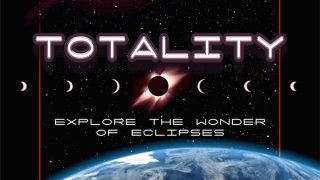
-
Tycho to the Moon
Meet Tycho, a dog who doesn’t just howl at the Moon, but wants to go there. Blast off on an amazing ride into space with Tycho and his human friends, Ruby and Michael. Learn about day and night, space travel, the phases of the Moon and features of the lunar surface. Get a close-up look at the Sun, watch the effects of gravity, see the Earth from space and watch meteors shoot across the night sky.
Ages 3 – 8

-
Unveiling the Invisible Universe
For tens of thousands of years humans have used their eyes to see light coming from the night sky. Today we use scientific instruments to observe the invisible Universe all around us.
At the beginning of the 17th century, the invention of the astronomical telescope by Galileo revolutionized our knowledge of the Universe. In the 20th century, with the arrival of rockets, it became possible to travel above the Earth’s atmosphere and observe X-ray and gamma ray radiation, evidence of a hot and violent Universe.
It’s not only light that provides information about the Cosmos. Neutrinos and cosmic rays reveal its secrets. More recently, the detection of gravitational waves from two merging black holes by the LIGO experiment, opened an entirely new window in astrophysics.
Enjoy spellbinding images of the Cosmos as revealed by all these unique messengers.

-
VAST: A Cosmic Journey through Space and Time
Space is unimaginably vast and incredibly beautiful. Thanks to our curiosity and quest for knowledge, we humans have been driven to explore space and learn more about the universe. There is still incredibly much left to explore. Join us on the journey, starting on Earth, venturing out in our solar system, and journeying all the way out to the edge of the known universe.
Narrated by Eva Rose.
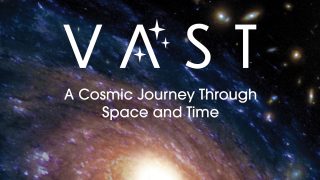
-
We Are Astronomers
Do you know what an astronomer does? We Are Astronomers reveals the global collaboration, technology and dedication required to answer the unresolved questions of the Universe. See how technologies such as the Large Hadron Collider, the observatories of Chile and the Hubble Space Telescope work and how they are used by teams around the world in this entertaining planetarium show. This show is narrated by former Dr Who star David Tennant and accompanied with music by New Zealand composer Rhian Sheehan. We Are Astronomers provides a visually stunning tour of contemporary astronomy using beautiful 360° full dome imagery.
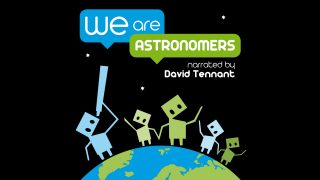
-
We Are Guardians
Join us on a journey into, under, and around the many ecosystems across our planet. Discover how each component fits together, and how the health of each part is vital to the health of Planet Earth. Discover how, with the help of satellites and scientific study, we can understand the links between human activities and climate change, and what we can do to work together to improve the health of our shared home.

-
We Are Stars
What are we made of? Where did it all come from? Explore the secrets of our cosmic chemistry, and our explosive origins. Connect life on Earth to the evolution of the Universe by following the formation of Hydrogen atoms to the synthesis of carbon, and the molecules for life. Explore the lives and deaths of stars. Narrated by Andy Serkis.
Watch the trailer here!

-
Worlds Beyond Earth
Take an exhilarating journey to the worlds that orbit our Sun and the unique conditions that make life on our planet Earth possible. Celebrate the extraordinary Age of Exploration carried out by robotic explorers, over the past 50 years with imagery from NASA, European Space Agency (ESA), and Japan Aerospace Exploration (JAXA) missions. Audiences will go on an epic adventure across the solar system, from our Moon, Mars and Venus to beyond the asteroid belt, to Jupiter and Saturn. Produced by the American Museum of Natural History in New York and narrated by Academy Award winner Lupita Nyong’o.

-
Worlds of Ice
Journey to the farthest reaches of the solar system, traveling through the dimensions of ice from the remote territories of the arctic, to a scientific complex nested under the South Pole. Experience it all immersed in a kaleidoscopic igloo, be dazzled by the icy wonderland of the arctic, and explores the relationship between humans and ice in science, culture and artistic expression. WORLDS OF ICE also rattles us, revealing how our disastrous human actions are responsible for the melting polar ice caps, and how close we are to the tipping point of dramatic climate change. A sobering reality indeed. Ice. Precious, and vital.
